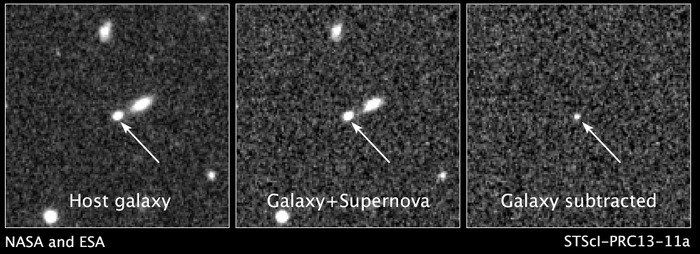GREENBELT, Md., April 4 (UPI) -- The Hubble telescope has found the farthest supernova ever detected, a cosmic "tape measure" to help astronomers gauge the size of the universe, NASA says.
Supernova UDS10Wil, which exploded more than 10 billion years ago, belongs to a special class called Type Ia supernovae, a kind of light beacon prized by astronomers because they provide a consistent level of brightness that can be used to measure the expansion of space, the space agency reported Thursday.















